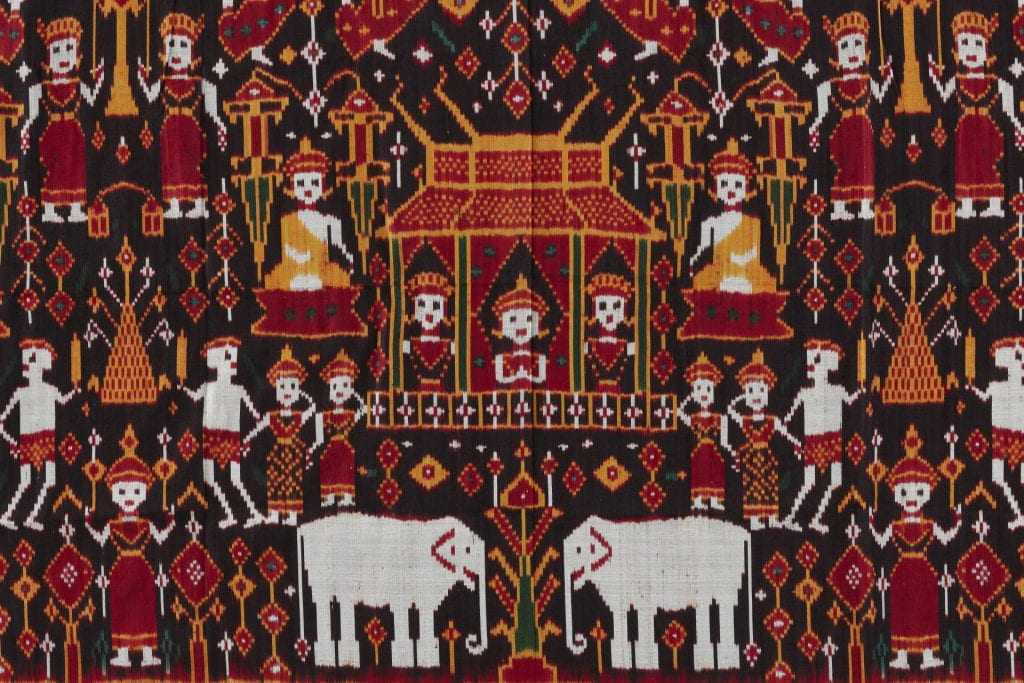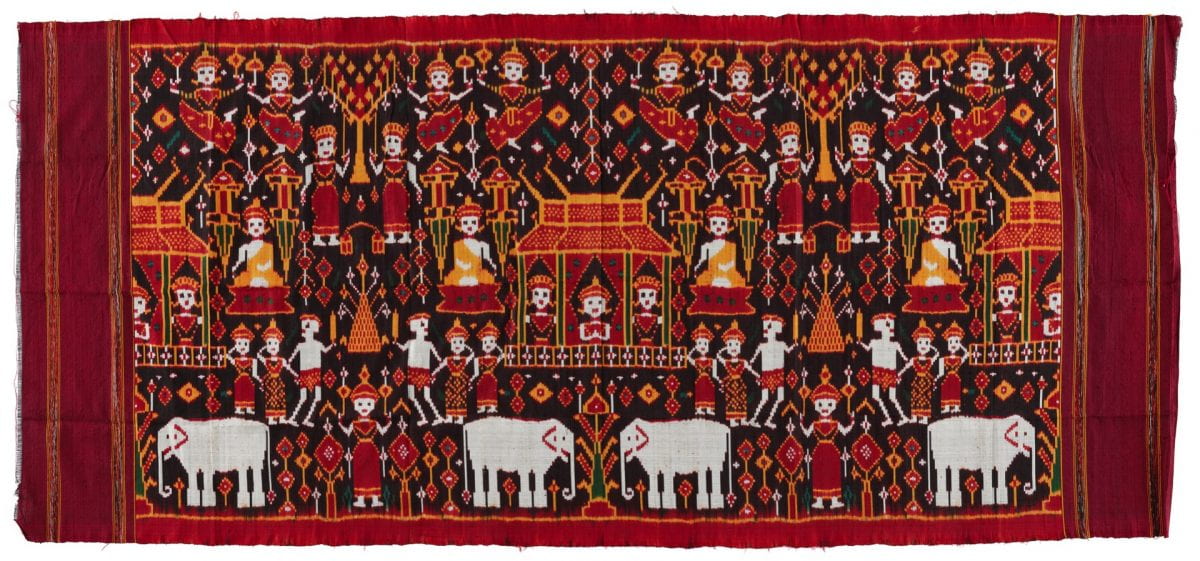The Kingdom of Cambodia has a long history of handwoven textiles. While no ancient examples survive, their existence is confirmed by meticulous depiction in bronze and stone carvings in Buddhist temples, such as those of Angkor Wat.
Khmer village women originally wove silk “hol pidan” to offer to the nearest pagoda or monastery as acts of merit. These large, pictorial textiles were hung in temples and depicted Jakatas, myths of Buddha’s past lives.

Detail of hol pidan.
This charming hol pidan shows scenes from the life of Jakata Vessantara, a compassionate and generous prince. At the top, spirits of clouds and water dance among the “bodhi” trees of enlightenment. Below them are Buddhas and a pavilion with three figures, Vessantara’s wife and children. The bare-chested figures represent the Brahmin beggar to whom Vessantara selflessly gave his white elephant and even his family as servants.
“Hol” is the Khmer word for ikat, a method of resist-dyeing yarns before weaving. To simplify the dyeing process, groups of threads can be combined to produce repeat mirror images, as in this example. The Cambodian technique employs a three-shaft wood frame loom to create a unique, uneven twill weave.
Starting in the mid-20th century, pidans lost their religious meaning and were produced as luxury goods for sale. Threatened by decades of political unrest and violence, Cambodian traditional weaving has now been revived with support from nonprofit organizations.

Bas-relief of dancing “asparas”on a stone wall in the Angor Watt temple complex. © rerecrutt/iStockphoto.com.
